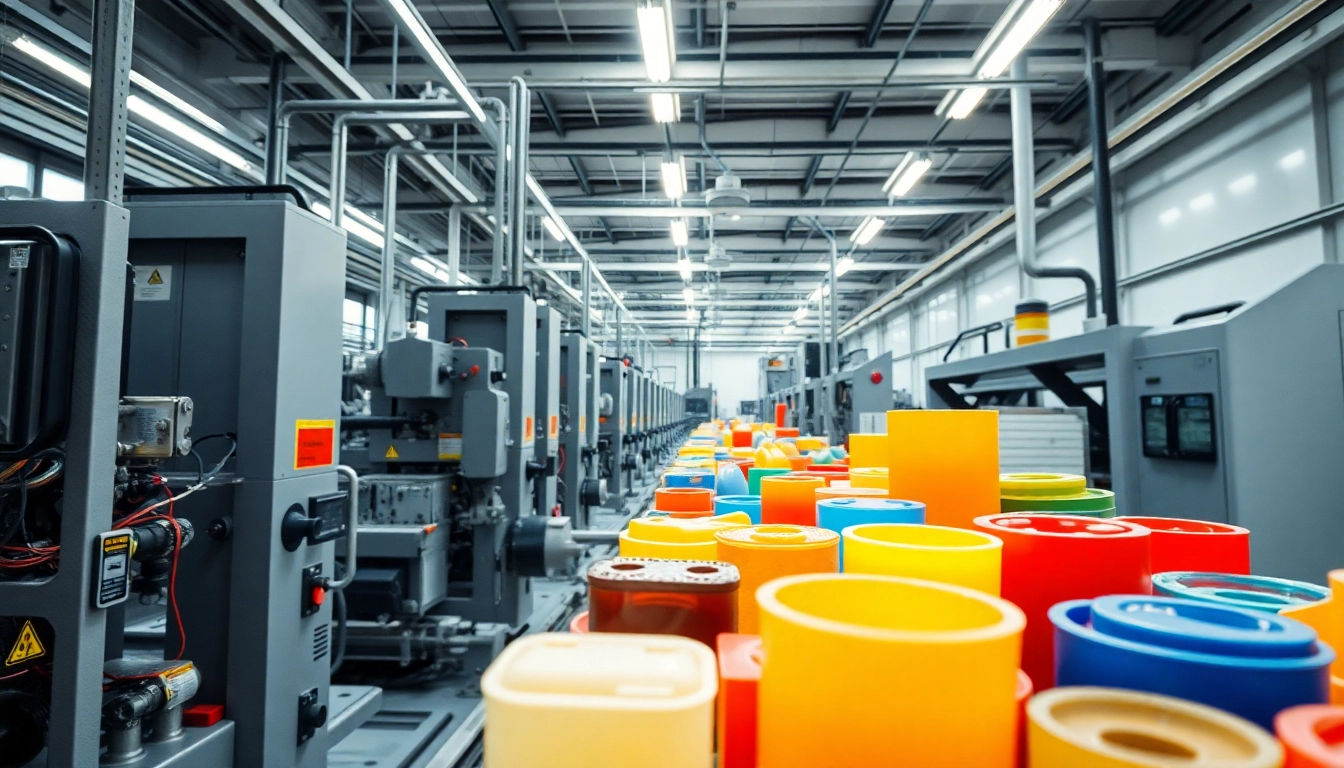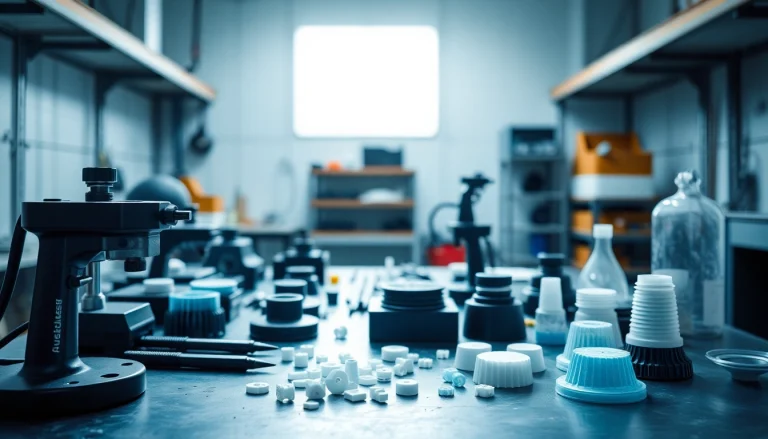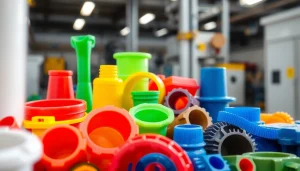Understanding Blow Moulded Plastic Parts
What are Blow Moulded Plastic Parts?
Blow moulded plastic parts refer to products created through the blow moulding process, a widely used manufacturing method for producing hollow plastic shapes. This process involves creating a plastic parison, which is then inflated with air within a mould to take on its desired form. Common outputs of blow moulding include containers, bottles, and other hollow components that are vital across various industries.
Blow moulding is favored for its efficiency and cost-effectiveness, allowing for large-scale production while maintaining consistency in the quality of the final products. Notably, blow moulded plastic parts are integral to sectors such as packaging, automotive, and consumer products, underscoring their significance in today’s manufacturing landscape.
The Advantages of Using Blow Moulding
Blow moulding presents numerous advantages that make it a preferred choice for manufacturers:
- Cost-Efficiency: The ability to produce large quantities of parts simultaneously lowers production costs significantly.
- Lightweight Products: Blow moulded parts are generally lighter than injection-moulded counterparts, which is beneficial for transportation and handling.
- Design Flexibility: The process can create complex designs with consistent wall thickness, allowing for innovative product designs and specifications.
- Rapid Production: Short cycle times enhance productivity and reduce lead times, making it easier to respond quickly to market changes.
Common Applications of Blow Moulded Parts
Blow moulded plastic parts are ubiquitous, finding applications in various sectors:
- Packaging: Bottles for beverages, cleaners, and other liquids are often produced using blow moulding.
- Automotive: Components like air ducts, fuel tanks, and exterior panels benefit from the lightweight and strength properties of blow moulded plastics.
- Consumer Goods: Toys, household items, and even sports equipment frequently utilize blow moulding to achieve desired shapes and durability.
The Blow Moulding Process Explained
Step-by-Step Guide to Blow Moulding
The blow moulding process can be broken down into several key steps:
- Material Preparation: Raw plastic pellets are fed into the extruder, where they are melted and formed into a parison.
- Forming the Parison: The molten plastic is extruded through a die to create a parison, which is then cooled slightly to maintain its shape.
- Moulding: The parison is clamped into a mould. Compressed air is injected, expanding the parison to fill the mould cavity.
- Cooling: The mould is cooled, allowing the plastic to solidify and take on its final shape.
- Finishing: The mould is opened, and the final product is ejected. Any excess material is trimmed away.
Types of Blow Moulding Techniques
Three primary methods of blow moulding are commonly employed:
- Extrusion Blow Moulding (EBM): This method involves the continuous extrusion of a parison, ideal for producing larger hollow objects.
- Injection Blow Moulding (IBM): This combines injection moulding and blow moulding techniques, creating more complex shapes with higher precision.
- Injection Stretch Blow Moulding: This process stretches the parison during moulding to enhance strength and clarity, often used for producing bottles.
Materials Used in Blow Moulding
A variety of plastics are suitable for blow moulding, each with unique properties:
- Polyethylene (PE): Highly versatile, available in high-density and low-density grades, ideal for packaging.
- Polypropylene (PP): Offers excellent chemical resistance, making it suitable for automotive components.
- Polyethylene Terephthalate (PET): Widely used for manufacturing beverage bottles due to its strength and recyclability.
- Polyvinyl Chloride (PVC): Known for its rigidity, often used in construction materials and toys.
Comparing Blow Moulding with Other Manufacturing Methods
Blow Moulding vs. Injection Moulding
While both blow moulding and injection moulding are popular techniques for producing plastic parts, they cater to different needs:
- Shape: Blow moulding is specifically designed for hollow objects, whereas injection moulding is better suited for solid components.
- Material Efficiency: Blow moulding typically reduces waste since virtually all material is used in producing hollow shapes.
- Cycle Time: Blow moulding usually offers faster production speed for large quantities of lightweight parts.
Cost Efficiency of Blow Moulding
The cost efficiency of blow moulding is one of its most attractive features. The initial investment in machinery may be high; however, the ability to produce large numbers of parts rapidly lowers the cost per unit significantly. Additionally, the less material wasted during the blow moulding process further enhances its cost-effectiveness.
Performance Metrics of Blow Moulded Parts
Performance metrics for blow moulded parts often emphasize:
- Durability: Blow moulded plastic parts typically exhibit high strength and impact resistance.
- Weight: These parts are generally lighter than similar solid plastic components, contributing to lower shipping costs.
- Consistency: High repeatability in production ensures that parts remain uniform, meeting stringent quality standards.
Challenges in Producing Blow Moulded Plastic Parts
Common Issues in Blow Moulding Production
Despite its advantages, blow moulding can encounter several challenges:
- Air Leaks: If leaks occur in the mould or parison, it can lead to inconsistent wall thickness and defective products.
- Mould Maintenance: Keeping moulds in optimal condition is crucial, as wear and tear can lead to dimensional inaccuracies.
- Material Limitations: Not all plastics are suitable for blow moulding, which can limit design options.
Quality Control Measures
To mitigate challenges and ensure high-quality output, several quality control measures are employed:
- Regular Inspections: Routine checks of moulds and machinery help identify issues before they affect production.
- Testing Processes: Performing tensile and impact tests on the final products ensures they meet industry standards.
- Process Monitoring: Implementing real-time monitoring of temperature and pressure during moulding can prevent issues related to processing variances.
Innovations Addressing Blow Moulding Challenges
Innovation plays a crucial role in overcoming challenges faced in blow moulding:
- Advanced Sensors: The integration of smart sensors assists in detecting anomalies in the production process.
- Automated Quality Control: Automated systems can evaluate product quality continuously, reducing human error.
- 3D Printing for Mould Design: Using 3D printing technology to prototype moulds allows for rapid iterations and design improvements.
Future Trends in Blow Moulding Technology
Advancements in Blow Moulding Equipment
The future of blow moulding technology hinges on advancements in machinery:
- Energy Efficiency: New machinery designs focus on reducing energy consumption during production.
- Reduction of Waste: Innovative equipment minimizes scrap and maximizes material usage.
- Integrated Systems: Integrated production lines offer greater flexibility and efficiency in adapting to changing production needs.
Environmental Considerations in Blow Moulding
As industries become more eco-conscious, blow moulding technology is evolving to meet environmental standards:
- Recyclable Materials: An increasing number of manufacturers prioritize the use of recyclable materials in blow moulding.
- Sustainability Practices: Implementing practices that reduce energy usage and emissions aligns with global sustainability goals.
- Life Cycle Assessments: More companies are conducting life cycle assessments to evaluate the environmental impact of their blow moulded products.
The Impact of Industry 4.0 on Blow Moulding Processes
The advent of Industry 4.0 is set to change the landscape of blow moulding:
- Smart Manufacturing: Enhanced connectivity between machines allows for more streamlined production processes.
- Data Analytics: The utilization of data to analyze production efficiency leads to continual improvements.
- Predictive Maintenance: Advanced algorithms can predict equipment failures before they happen, minimizing downtime.








